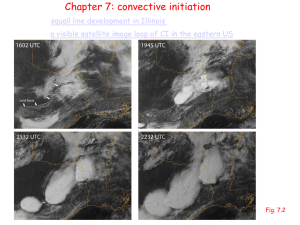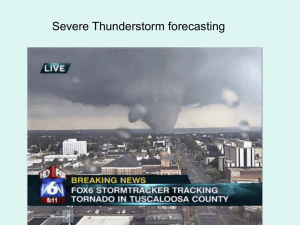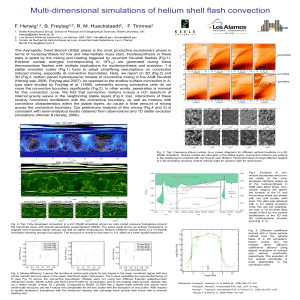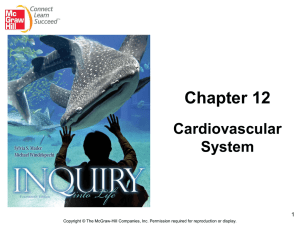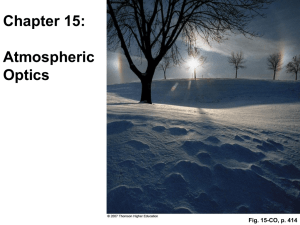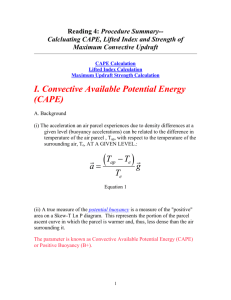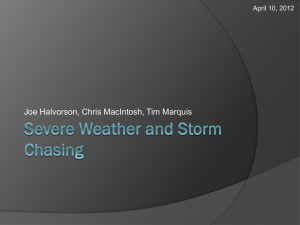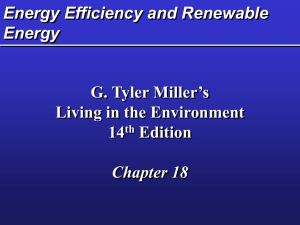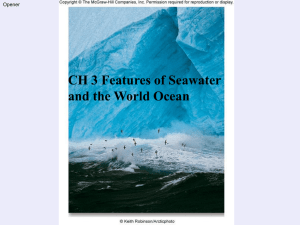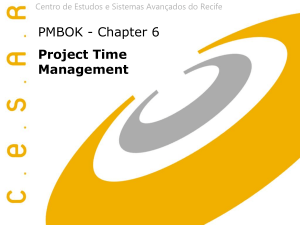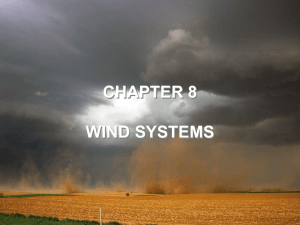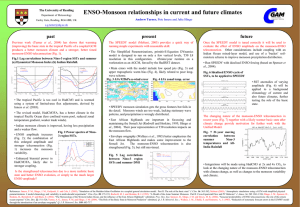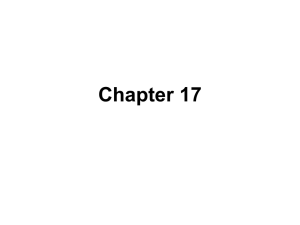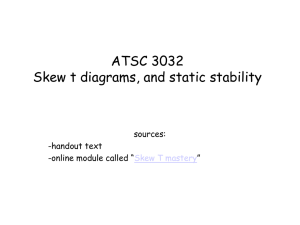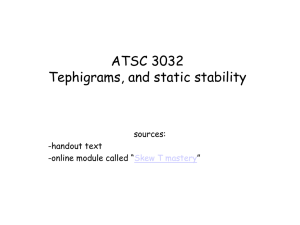Fig. 7.4
advertisement
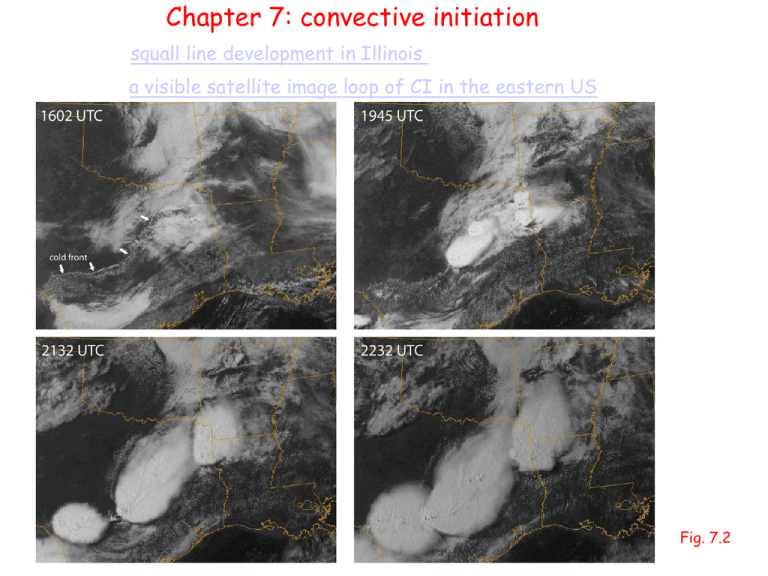
Chapter 7: convective initiation squall line development in Illinois a visible satellite image loop of CI in the eastern US 35°N 103°W Fig. 7.2 92°W 35°N Fig. 7.10 annual cycle of lower-tropospheric stability & BL moisture across N America at 35°N Fig. 7. 1: numbers refer to months (1 … 12) 7.1 CI requisites understanding destabilization: lapse rate tendency equation First law of thermodynamics understanding destabilization: lapse rate tendency equation Fig. 7.4: term I: shown is the 700-500 mb T difference. Larger differences are advected from the NW into Texas. Fig. 7.5: term II: effect of vertical lapse rate advection plotted on a skew T. initial sounding Fig. 7.6: term I + III: effect of differential horizontal temp. advection Fig. 7.7: term IV: effect of stretching Fig. 7.8: term V: effect of latent heat release. equilibrium level benign severe LFC no convection convective inhibition LNB CAPE B LCL parcel dz sensitivity of CAPE / CIN to choice of “parcel” surface-based CAPE / CIN mixed-layer CAPE / CIN how to derive the MU CAPE (most unstable CAPE) WLR: wet-bulb lapse rate deep convection source layer destabilization without lapse rate changes: the effect of LL moisture & heating, and the lifting of a potentially-unstable layer three ways to remove CIN: LL convergence, CBL deepening adding water vapor to the CBL note that LL moistening & warming not only reduce CIN, but also increase CAPE CBL heating (sfc sensible heat flux) potential instability, layer lifting, and convective initiation potential instability: d e 0 dz or d w 0 dz Lifting a potentially unstable layer yields CAPE Typical wet-season tropical sounding Conditional instability: d e* < 0 dz 7.2 Mesoscale circulations and boundaries affecting CI Fig. 7.11: Sea breeze, HCR’s, and convective initiation (CI) Atkins et al. 1995 CI may occur along single boundaries, or at intersections between boundaries, or between boundaries and HCRs Fig. 7.16: Horizontal convective rolls & CI (Weckwerth et al 1996) 3D structure of boundaries: core/gap, cleft & lobe, misocyclones, and CI Fig. 7.12 and 13 (Marquis, Richardson, Markowski 2007) another example of BL variability due to mesoscale circulations and boundaries gravity wave ridges predicting CI from a sounding real parcel? Tw The key reason why the parcel may follow the dashed black curve is entrainment, mainly as soon as a shallow Cu cloud forms. Note the very dry air above the BL. The shallow Cu will be diluted by the dry air, and the Cu temperature will cool towards the wet-bulb T (Tw) of the mixed air. 7.3 Moisture convergence & CI • changes in mixing ratio by moisture convergence in flux form: • Most model Cu parameterization schemes use resolved moisture convergence & stability changes as arguments. They may not capture the fine-scale structure of mesoscale boundaries. CI failure Fig. 7.15: CI failure. The Forth Worth sounding suggest no CIN, plenty of CAPE. CI did occur further north. Misocyclones (Marquis et al 2007) wind profile wind profile wind profile wind profile destruction of embryonic convection by shear tick marks every 2 km on x axis every 1 km on z axis Fig. 7.20 and 21 7.4 elevated convection
